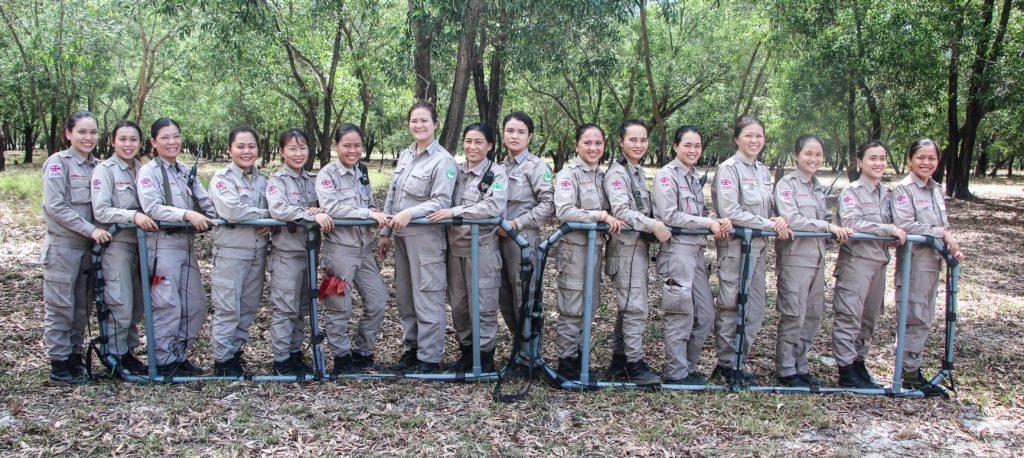RENEW’s All-Women Bomb Clearance Team
On this hot late-spring day, two petite women dressed in protective gear move across an empty field that once grew two rice crops each year, but that was before the war and generations ago.
They walk carefully and slowly. Between them is a large metal detector providing constant electronic commentary about what it sees as it searches for bombs and other unexploded ordnance (UXO) beneath the surface of the sandy field.

This RENEW/NPA all-women bomb clearance team is working to clear a parcel of land that was a battlefield a half-century ago. Here, in Hoi Yen Village of Hai Que Commune, large land areas are unusable because bombs and mines have not been cleared. The 15-member team will have work aplenty for a decade to come.
Algorithms generated by RENEW’s state-of-the-art GIS (Geographic Information System) computers have digitally defined today’s search area and made calculations about the best approach to remove the unexploded bombs, mortar rounds, landmines, and artillery shells that these women will certainly find.
This is a serious business. To miss a bomb could cost someone their life. To mishandle a bomb could cost you your own.
That’s not a fact lost on several of these women, who have lost family members to UXO accidents. They mustn’t miss a single bomb in their search areas. Their families, friends, and neighbors for years to come will depend on them.
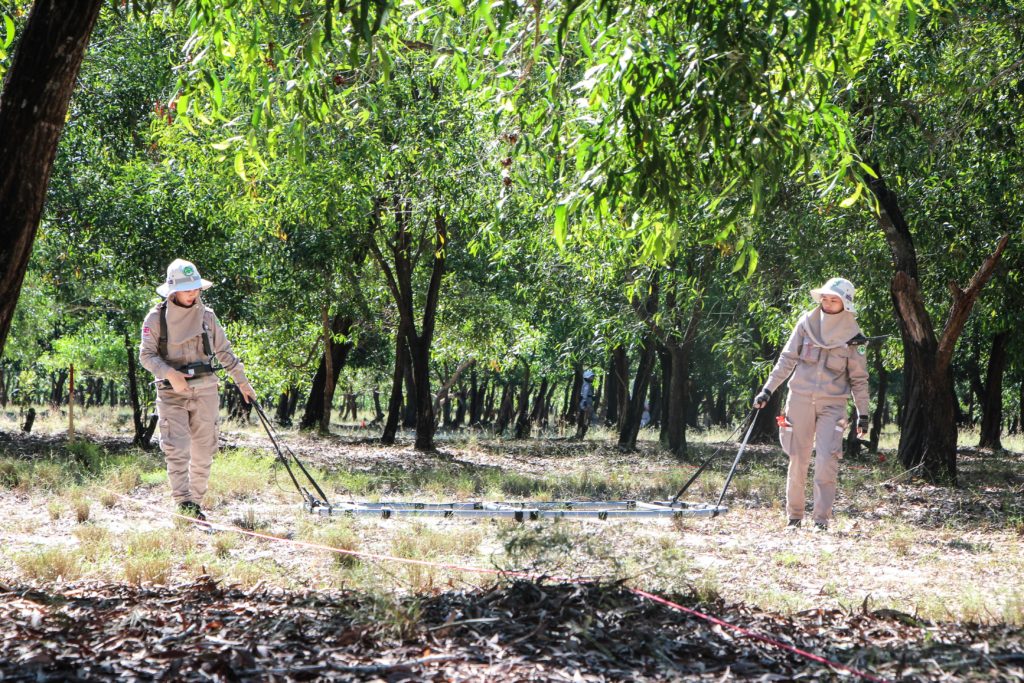
They are highly trained and certified. Their training is continuous not only in finding and identifying the explosive devices but also in the technology they use. The gear of each team is in constant contact with computers back at RENEW headquarters. First, the location to within 3 meters (or about 3 yards) is recorded. Then, as the algorithms learn more, new calculations are made, and the updated site data is relayed back to the search site and displayed on the iPad Pro in the team leader’s hands.
Soft-spoken radio calls relay information among the team members as they work in choreographed patterns. Here, consistency and precision are the first orders of safety. The electronic equipment has a language of whirs and chirps — but sometimes a warning: “We’ve found a big one.”
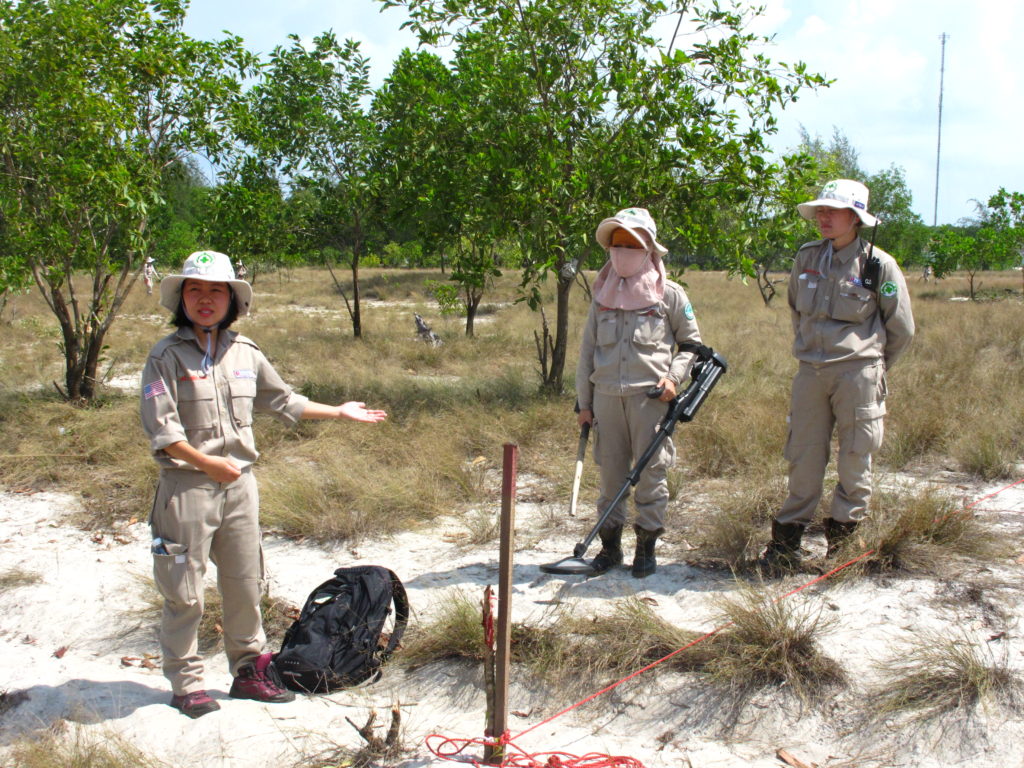
The first RENEW all-women battle area clearance team was established and put into operation in October of 2018.
RENEW and its partner, Norwegian People’s Aid, have deployed two battle area clearance teams, including the all-women team, to clear confirmed hazardous areas which have been identified and mapped out through a technical survey process in Hai Lang District. So far, the two teams have completed clearance of over 4,744,998 square meters (1,173 acres) and safely destroyed 1,256 cluster munitions and 1,768 other explosives. The post-clearance safe land has been released to the community for resettlement and further development, benefiting directly 6,344 local people in Hai An and Hai Que communes.

The women of my clearance team are proud of our work to clear our homeland of explosive ordnance.
“The women of my clearance team are proud of our work to clear our homeland of explosive ordnance,” said Deputy Team Leader Trinh Thi Hong Tham through an interpreter. “We constantly work to expand our knowledge and to hone the skills needed to undertake this work safely. “To be sure, this work is not for everyone. However, it is so important that we work as a very tight-knit team.”
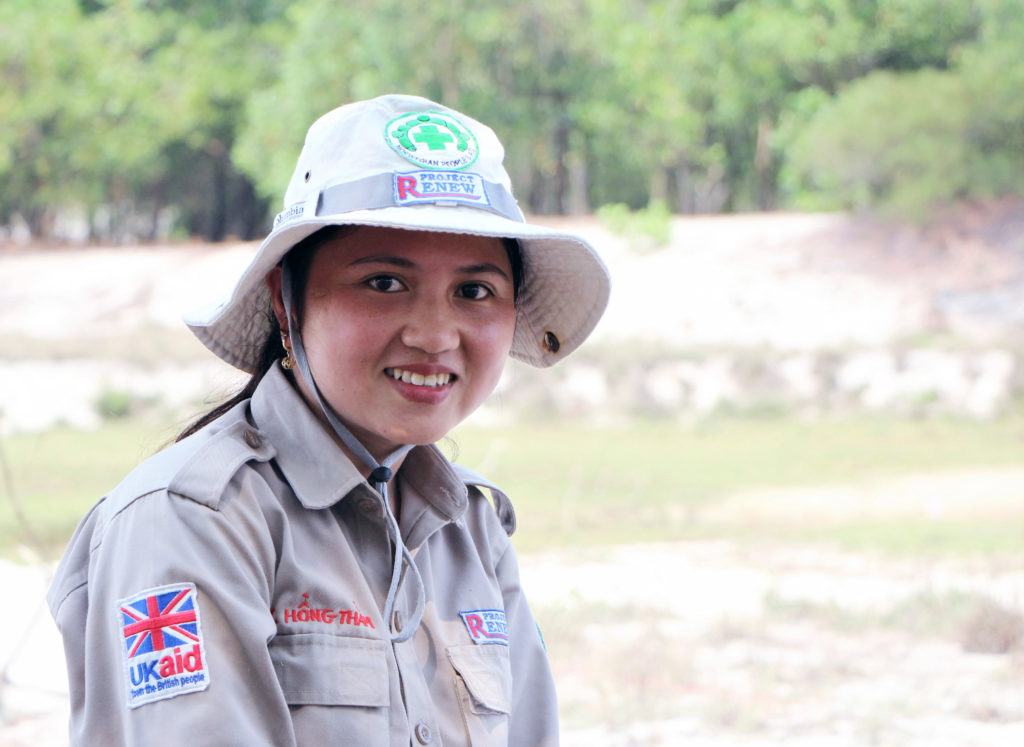
Trinh Thi Hong Tham 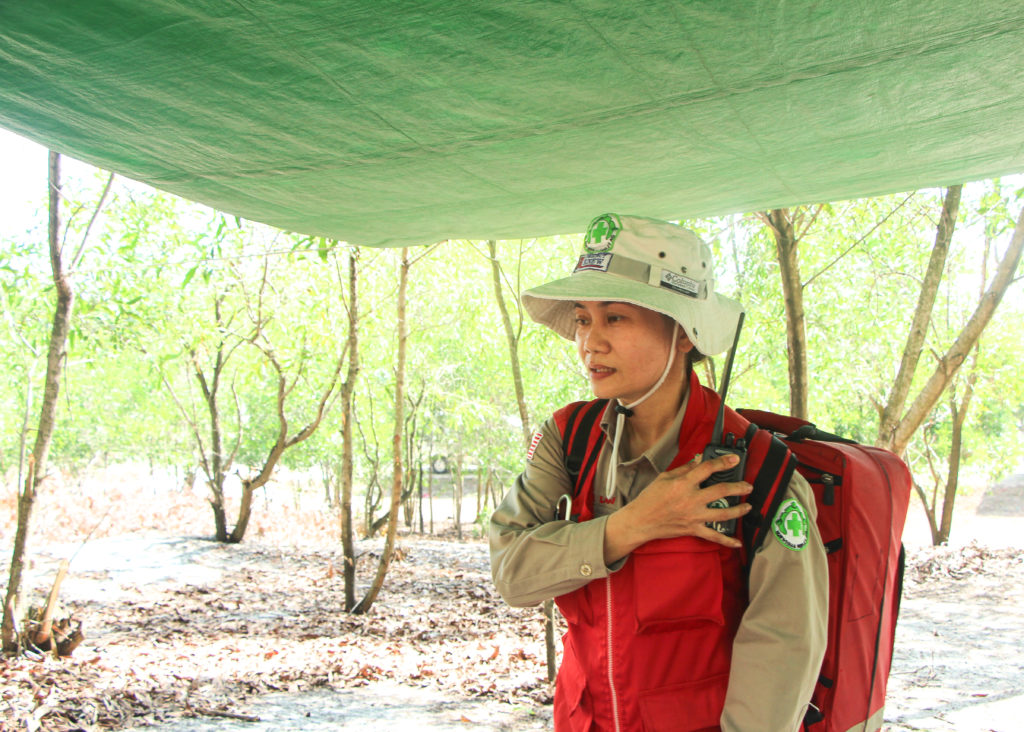
Nguyen Thi Ha Lan
As the day wears on, bombs are found, marked, and identified. RENEW deals with explosive devices of every description and has cataloged more than 264 different categories of lethal explosive devices.
Medic and safety officer Nguyen Thi Ha Lan supervises her teammates to prepare a controlled detonation to destroy cluster bombs, which have caused the most death and injuries in Quang Tri.
When the team is ready to detonate, loudspeakers issue a warning to clear the area. A siren sounds and then a stunning blast. And the process repeats itself.
On this day, the all-women team cleared 3,300 square meters of a variety of bombs and other explosive devices. In less than a year, this field will be flooded for its first rice crop in almost 60 years.
